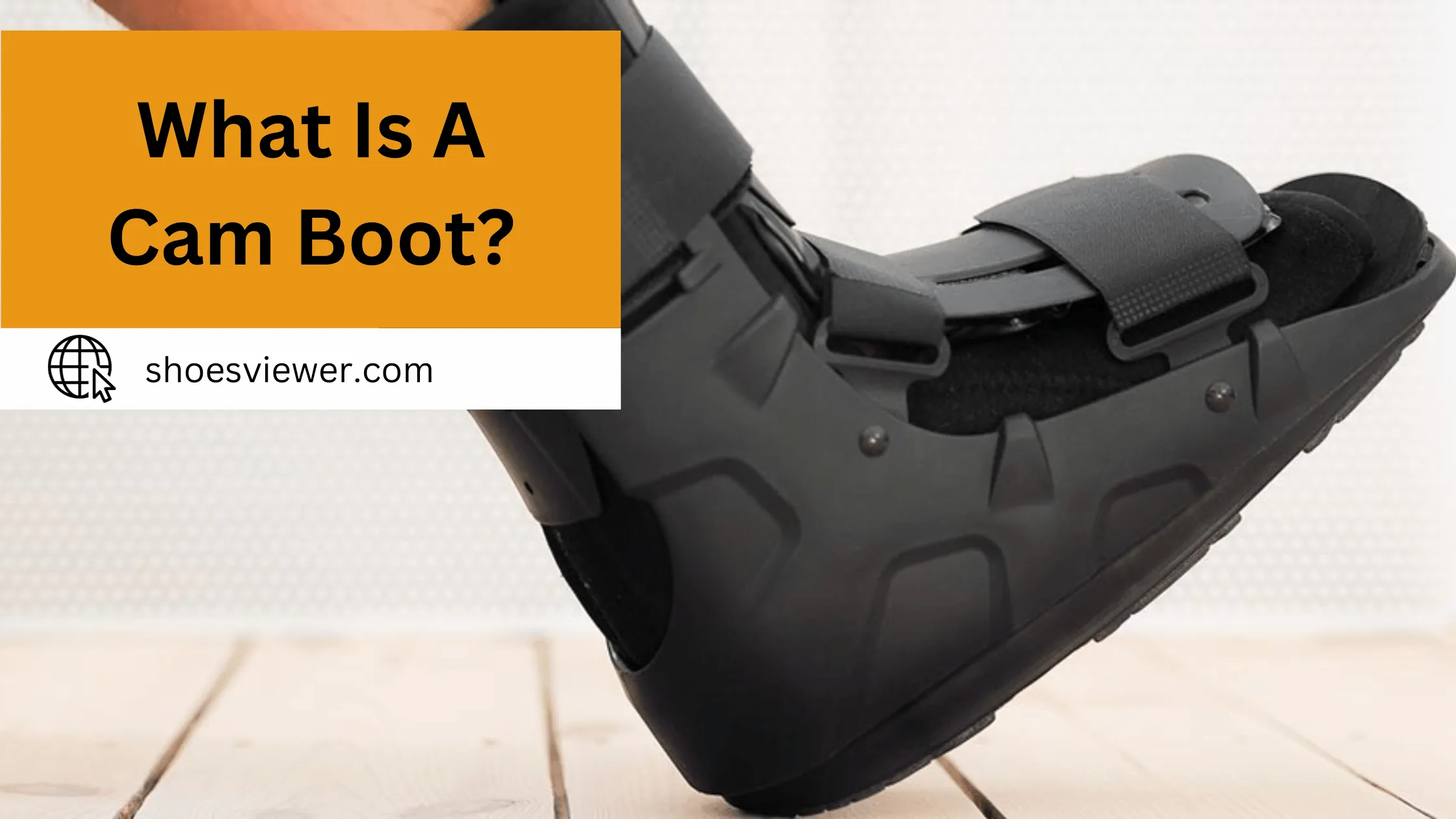A cam boot is one such gear that I have found incredibly practical when traveling difficult terrain or trails. After experiencing an ankle sprain while backpacking a few months ago, I was keenly interested in researching cam boots and how they could help prevent future injuries on my excursions.
Here, I will introduce what exactly a cam boot is and why it can be beneficial for any outdoor adventure! Furthermore, I use examples from my own experiences. I want to share my experiences with you and help explain the basics of a cam boot so that you can stay safe on all your adventures!
Everything You Need To Know About Cam Boot:
A cam boot, short for a cam walker or controlled ankle motion boot, is a medical device used to support and protect the foot and ankle during healing. It is commonly prescribed for conditions such as fractures, sprains, tendon injuries, and post-surgery recovery.
My encounter with a cam boot happened when I fractured my ankle while playing soccer. The doctor informed me that wearing a cam boot would aid in healing and provide stability to my injured foot. Initially, I was apprehensive about wearing it, unsure how it would feel and impact my daily activities.
Once I started wearing the cam boot, I realized how beneficial it was in supporting and protecting my injured ankle. The rigid sole prevented excessive movement, which aided in the healing process.
One important thing to note is that each person’s experience with a cam boot may vary depending on their injury and personal circumstances. It’s crucial to follow the guidance of your healthcare provider and wear the boot as directed.
Understanding The Design And Construction Of CAM boots:
I have extensive experience recommending and fitting Controlled Ankle Motion (CAM) boots for patients. Understanding their design and construction is crucial for ensuring effective treatment and patient comfort.
Design Elements:
One of the critical features of cam boots is their ability to provide stability and immobilization to the injured foot or ankle. The design incorporates a rigid frame made of lightweight materials such as plastic or fiberglass, which offers support while ensuring the boot’s overall weight remains manageable.
Comfort And Adjustability:
Cam boots are designed with comfort in mind. The boot’s interior typically features soft padding and cushioning to reduce pressure points and ensure a snug fit. Additionally, most boots offer adjustable straps or closures, allowing for customization and accommodating various foot sizes and shapes.
Functionality And Practicality:
Cam boots are designed to mimic the natural walking motion, enabling individuals to maintain mobility while protecting the injured area. The boot’s sole is designed to provide shock absorption and traction, making it suitable for walking on different surfaces. These functional aspects of the cam boot allowed me to carry out daily activities with relative ease, even while my ankle was healing.
Common Medical Uses Of Cam Boots:
In the following points, I will share my experience with Cam Boots and the standard medical uses of these devices.
Ankle Fractures:
One of the primary uses of CAM boots is in treating ankle fractures. They provide the necessary support and immobilization for the bones to heal correctly. In my case, it was crucial to maintain the alignment of my ankle as it healed.
Post-Operative Care:
Patients undergoing foot or ankle surgery often require a CAM boot during recovery. It protects the surgical site and aids in gradual weight-bearing, essential for proper healing.
Severe Sprains:
CAM boots are also beneficial in the treatment of severe ankle sprains. They help stabilize the joint and prevent further injury, which I found particularly useful in managing my ankle sprain before the fracture.
Achilles Tendon Injuries:
For injuries to the Achilles tendon, a CAM boot can be a part of the treatment regimen. It keeps the foot flexed, reducing strain on the tendon thereby facilitating healing.
Stress Fractures:
Stress fractures in the foot can also be managed using CAM boots. They allow for reduced weight-bearing on the affected area, which is crucial for healing.
My experience with a CAM boot facilitated my recovery and enhanced my professional understanding of its importance in patient care. Recommending these boots to patients comes with a personal assurance of their effectiveness and comfort.
Benefits And Advantages Of Using Cam Boots:
After a hiking mishap that resulted in a twisted ankle, I turned to a CAM boot for recovery. The support and comfort it provided accelerated my healing process and allowed me to maintain a degree of mobility crucial for my daily activities.
Enhanced Stability And Support:
CAM boots are designed to provide superior support and stability to the ankle and foot. It significantly reduced the risk of re-injury by keeping my ankle in a safe, stabilized position.
Adjustable Fit For Comfort:
One of the advantages of CAM boots is their adjustability. You can modify the tightness and compression based on your comfort and swelling levels, which I found particularly useful as my ankle healed and the swelling fluctuated.
Facilitates Mobility:
Despite the immobilization, CAM boots allow for a degree of mobility. This was crucial, enabling me to move around and continue most of my daily tasks without putting undue stress on the injured ankle.
Versatility In Treatment:
CAM boots can be used for foot and ankle issues, from fractures to sprains and post-operative care. Their versatility makes them a go-to solution for many conditions, as I often explain to my patients.
Reduces Pain And Discomfort:
The boot’s design helps evenly distribute weight and reduces pressure on the injured area. This feature was a game-changer for me, significantly lessening the pain and discomfort associated with my injury.
Easy To Use And Maintain:
CAM boots are generally user-friendly. They are easy to put on and take off, essential for patients with limited mobility or strength. Additionally, they require minimal maintenance, making them a convenient option for prolonged use.
Using a CAM boot was instrumental in my recovery from an ankle injury. Its benefits, ranging from stability and comfort to versatility and ease of use, make it an invaluable tool for imaging various foot and ankle conditions.
Potential Side Effects And Precautions:
I noticed some initial discomfort and challenges when I started using the CAM boot for my ankle. This experience highlighted the importance of being aware of potential side effects and taking appropriate precautions.
Skin Irritation And Pressure Sores:
One issue I encountered was skin irritation under the boot. This is common, especially if the boot needs to be fitted correctly or worn for extended periods.
Precaution:
Ensure the boot fits appropriately and check for redness or pressure sores regularly. Using a barrier like a sock or soft padding can also help.
Muscle Stiffness And Atrophy:
Long-term use of a CAM boot can lead to muscle stiffness and atrophy due to immobilization.
Precaution:
Engage in approved exercises to maintain muscle strength and flexibility. I followed a gentle exercise routine as advised by my physiotherapist.
Altered Gait And Balance Issues:
Wearing a CAM boot can affect your gait and balance. I noticed a slight limp and imbalances, a common side effect.
Precaution:
Be cautious while walking and avoid uneven surfaces. Physical therapy can also assist in maintaining balance and gait.
Swelling:
Another issue can be foot swelling, especially if the boot is too tight or excessive time is spent on the foot.
Precaution:
Regularly elevate the injured foot and ensure the boot is not overly tight.
Dependency:
As I realized during my recovery, becoming overly dependent on the boot for mobility is a potential risk.
Precaution:
Following medical advice, gradually reduce dependence on the boot as healing progresses.
While CAM boots are highly beneficial for foot and ankle injuries, awareness of potential side effects and taking appropriate precautions are crucial for a safe and effective recovery.
Conclusion:
A CAM boot can be a great way to support the foot and ankle for fractures or other injuries. Speaking with your doctor to ensure this treatment is necessary and suitable for you is essential. Being proactive about managing any foot or ankle issues can go a long way in keeping you healthy and avoiding future complications. As someone who has suffered from an ankle injury, I know firsthand the importance of wearing a CAM boot when recommended by my care provider. Regarding your feet and ankles, taking care now will save you time, energy, and money later. So listen to your doctor’s advice and invest in a quality CAM boot if they recommend it!

